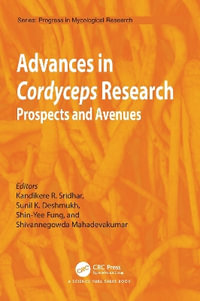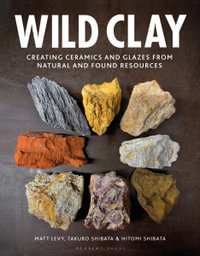1 Background and Technical Aspects of the Chemical Industry.- 1.1 Important General Characteristics.- 1.2 Types and Significance of Information.- 1.3 The Value of Integration.- 1.4 The Economy of Scale.- 1.5 Chemical Processing.- 1.5.1 Types of Reactor.- 1.5.2 Fluid Flow Through Pipes.- 1.5.3 Controlling and Recording Instrumentation.- 1.5.4 Costs of Operation.- 1.5.5 Conversion and Yield.- 1.5.6 Importance of Reaction Rate.- 1.6 Chemical Volume Perspectives.- Relevant Bibliography.- References.- 2 Air Quality and Emission Control.- 2.1 Significance of Man's Activity on Atmospheric Quality.- 2.1.1 Natural Contaminants.- 2.2 Classification of Air Pollutants.- 2.2.1 Quantification and Identification of Particulates.- 2.2.2 Quantification and Identification of Aerosols.- 2.2.3 Analysis of Gaseous Air Pollutants.- 2.2.3.1 Wet Chemical Analysis of Gases.- 2.2.3.2 Instrumental Methods for Gas Analysis.- 2.2.3.3 Concentration Units for Gases in Air.- 2.2.3.4 Biological Methods for Air Pollution Assessment.- 2.3 Effects of Air Pollutants.- 2.4 Air Pollutant Inventories, and Pollutant Weighting.- 2.4.1 Automotive Emission Control.- 2.4.2 Air Pollutant Weighting.- 2.5 Methods and Limitations of Air Pollutant Dispersal.- 2.6 Air Pollution Abatement by Containment.- 2.6.1 Pre-combustion Removal Methods.- 2.7 Post-combustion Emission Control.- 2.7.1 Particulate and Aerosol Collection Theory.- 2.7.2 Particulate and Aerosol Collection Devices.- 2.7.3 Hydrocarbon Emission Control.- 2.7.4 Control of Sulfur Dioxide Emissions.- 2.7.5 Control of Nitrogen Oxide Emissions.- Relevant Bibliography.- References.- 3 Water Quality and Emission Control.- 3.1 Water Quality, Supply, and Waste Water Treatment.- 3.2 Water Quality Criteria and Their Measurement.- 3.2.1 Suspended Solids.- 3.2.2 Dissolved Solids.- 3.2.3 Total Solids or Residue Analysis.- 3.2.4 Dissolved Oxygen Content.- 3.2.5 Relative Acidity and Alkalinity.- 3.2.6 Toxic Substances.- 3.2.7 Micro-organisms.- 3.2.8 Temperature.- 3.2.9 Oxygen Demand.- 3.2.10 Biological Indicators.- 3.3 Water Quality Related to End Uses.- 3.4 Treatment of Municipal Water Supplies.- 3.4.1 Simple Municipal Water Treatment.- 3.4.2 More Elaborate Municipal Water Treatment Methods.- 3.4.3 Municipal Water by Desalination.- 3.4.4 Water Quality Requirements of Industry.- 3.5 Treatment of Municipal Waste Waters.- 3.5.1 Discharge Requirements, and Remedies to Post-Discharge Degradation.- 3.5.2 Stream Assimilatory Capacities.- 3.5.3 Primary and Secondary Sewage Treatment.- 3.5.4 Tertiary, or Advanced Sewage Treatment.- 3.5.5 Sludge Handling and Disposal.- 3.6 Industrial Liquid Waste Disposal.- 3.6.1 Aqueous Wastes With High Suspended Solids.- 3.6.2 Aqueous Wastes Containing an Immiscible Liquid.- 3.6.3 Heated Effluent Discharges.- 3.6.4 Aqueous Waste Streams with a High Oxygen Demand.- 3.6.5 Highly Coloured Waste Waters.- 3.6.6 Fluid and Solid Combustible Wastes.- 3.6.7 Neutralization and Volume Reduction of Intractible Waste Streams.- 3.6.8 Ultimate Destruction or Disposal of Hazardous Wastes.- Relevant Bibliography.- References.- 4 Natural and Derived Sodium and Potassium Salts.- 4.1 Sodium Chloride.- 4.1.1 Solar Salt.- 4.1.2 Sodium Chloride by Conventional Mining.- 4.1.3 Solution Mining of Sodium Chloride.- 4.1.4 New Developments in Sodium Chloride Recovery Ill.- 4.2 Potassium Chloride Ill.- 4.2.1 Potassium Chloride Production and Use Pattern Ill.- 4.2.2 Potassium Chloride Recovery from Natural Brines.- 4.2.3 Potassium Chloride by Conventional Mining and Froth Flotation.- 4.2.4 Solution Mining of Potassium Chloride.- 4.2.5 Environmental Aspects of Sodium and Potassium Chloride Recovery.- 4.2.6 New Developments in Potassium Chloride Recovery.- 4.3 Sodium Sulfate.- 4.3.1 Production and Use Pattern for Sodium Sulfate.- 4.3.2 Recovery from Natural Brines.- 4.3.3 By-product Sodium Sulfate.- Relevant Bibliography.- References.- 5 Industrial Bases by Chemical Routes.- 5.1 Calcium Carbonate.- 5.2 Calcium Oxide.- 5.2.1 Lime Kiln Emission Control.- 5.2.2 Uses of Calcium Oxide.- 5.3 Calcium Hydroxide.- 5.3.1 Uses of Calcium Hydroxide.- 5.4 Natural and Synthetic Sodium Carbonate.- 5.4.1 Environmental and Related Concerns of Sodium Carbonate Production.- 5.4.2 Uses of Sodium Carbonate.- 5.5 Sodium Hydroxide by Causticization.- 5.5.1 Emission Controls for the Causticization Process.- Relevant Bibliography.- References.- 6 Electrolytic Sodium Hydroxide and Chlorine and Related Commodities..- 6.1 Electrochemical Background and Brine Pretreatment.- 6.1.1 Brine Electrolysis in Diaphragm Cells.- 6.1.2 Brine Electrolysis in Chlorate Cells.- 6.1.3 Purification of Crude Diaphragm Cell Products.- 6.2 Electrochemical Aspects of Brine Electrolysis.- 6.3 Brine Electrolysis in Mercury Cells.- 6.4 Emission Control Aspects of Brine Electrolysis.- 6.5 New Developments in Brine Electrolysis.- 6.6 Chlorine and Sodium Hydroxide Production, Use and Balance.- Relevant Bibliography.- References.- 7 Sulfur and Sulfuric Acid.- 7.1 Commercial Production of Sulfur.- 7.2 Properties of Elemental Sulfur.- 7.3 Sulfur Recovery by Mining and Retorting.- 7.4 Frasch Sulfur.- 7.4.1 Environmental Aspects of Frasch Operations.- 7.5 Sulfur from Sour Natural Gas.- 7.5.1 Amine Absorption Process for Hydrogen Sulfide Removal.- 7.5.2 Claus Process Conversion of Hydrogen Sulfide to Sulfur.- 7.6 New Developments and Emission Controls, Claus Technology.- 7.7 Sulfuric Acid.- 7.7.1 Contact Process Sulfuric Acid.- 7.8 Chamber Process Sulfuric Acid.- 7.9 Emission Containment for Sulfuric Acid Plants.- 7.9.1 Contact Process Sulfuric Acid Emission Control.- 7.9.2 Emission Control for Chamber Process Acid Plants.- 7.10 Recycling of Sulfuric Acid.- Relevant Bibliography.- References.- 8 Phosphorus and Phosphoric Acid.- 8.1 Phosphate Rock Deposits and Beneficiation.- 8.1.1 End Use Areas for Phosphate Rock.- 8.1.2 Environmental Impacts of Phosphate Rock Processing.- 8.2 Elemental Phosphorus.- 8.2.1 Electric Furnace Phosphorus.- 8.2.2 Uses of Elemental Phosphorus.- 8.2.3 Environmental Aspects of Phosphorus Production.- 8.3 Phosphoric Acid via Phosphorus Combustion.- 8.3.1 Environmental Features of Furnace Phosphoric Acid Production.- 8.4 Phosphoric Acid Using Sulfuric Acid Acidulation.- 8.4.1 Operation of the Acidulation Process.- 8.4.2 New Developments and Variations on Sulfuric Acid Acidulation Method.- 8.4.3 Emission Control Measures for Wet Process Acid.- 8.5 Phosphoric Acid Using Hydrochloric Acid Acidulation.- 8.5.1 Product Recovery by Solvent Extraction.- 8.5.2 Haifa (or IMI) Phosphoric Acid Process Details.- 8.5.3 Haifa Process Byproducts and Waste Disposal.- 8.6 Major Producers and Users of Phosphoric Acid.- Relevant Bibliography.- References.- 9 Ammonia, Nitric Acid and their Derivatives.- 9.1 Ammonia, Historical Background.- 9.1.1 Principles of Ammonia Synthesis: the Haber, or Haber-Bosch Process.- 9.1.2 Feedstocks for Ammonia Synthesis, Air Distillation.- 9.1.3 Ammonia Feedstocks, Reforming and Secondary Reforming.- 9.1.4 Ammonia Synthesis.- 9.1.5 Major Uses of Ammonia.- 9.1.6 New Developments in Ammonia Synthesis Technology.- 9.1.7 Environmental Concerns of Ammonia Production.- 9.2 Production of Nitric Acid.- 9.2.1 Nitric Acid Background.- 9.2.2 Nitric Acid by Ammonia Oxidation, Chemistry and Process Considerations.- 9.2.3 Process Description.- 9.2.4 Nitric Acid Concentrations and Market.- 9.2.5 Nitric Acid Process Variants and New Developments.- 9.2.6 Emission Control Features.- 9.3 Commercial Ammonium Nitrate.- 9.3.1 Ammonium Nitrate Background.- 9.3.2 Production of Ammonium Nitrate.- 9.4 Production of Urea.- 9.5 Synthetic Fertilizers.- 9.5.1 Fertilizer Composition.- 9.5.2 Formulation of Major Active Constituents.- 9.5.3 Environmental Aspects of Fertilizer Production and Use.- Relevant Bibliography.- References.- 10 Aluminum and Compounds.- 10.1 Historical Background.- 10.2 Production of Alumina from Bauxite: The Bayer Process.- 10.3 Aluminum by the Electrolysis of Alumina.- 10.4 New Developments in Aluminum Production.- 10.5 Emission Control Problems and Solutions.- 10.5.1 Environmental Impacts of Bayer Aluminum from Bauxite.- 10.5.2 Aluminum Smelter Emission Control Problems.- 10.5.3 Smelter Emission Control Strategies.- 10.6 Properties and Uses of Aluminum and its Compounds.- 10.6.1 Preparation and Uses of Aluminum Compounds.- Relevant Bibliography.- References.- 11 Ore Enrichment and Smelting of Copper.- 11.1 Early Development.- 11.2 Ore Occurrence and Beneficiation of Low Grades.- 11.2.1 Beneficiation of Low Grades Ores by Froth Flotation.- 11.2.2 Smelting of Concentrates Derived from Copper Ores.- 11.2.3 Electro-refining of Smelted Copper.- 11.3 Fabrication and End Uses.- 11.4 Emission Control Practice Related to Copper Processing.- 11.4.1 Mining and Concentration.- 11.4.2 Smelter Operation.- 11.5 Hydrometallurgical Copper Recovery.- 11.5.1 Basis Principles.- 11.5.2 New Hydrometallurgical Developments.- Relevant Bibliography.- References.- 12 Production of Iron and Steel.- 12.1 Early History and Development.- 12.2 Reduction of Iron Ores to Iron.- 12.2.1 Direct Reduction.- 12.2.2 Blast Furnace Reduction of Iron Ores to Pig Iron.- 12.3 The Making of Mild, and Carbon Steels.- 12.3.1 Pneumatic Steelmaking: The Bessemer Process.- 12.3.2 The Open Hearth Process.- 12.3.3 Electric Furnace Steel.- 12.4 Recent Developments: Oxygen Steelmaking.- 12.5 Iron and Steels, and their Properties and Uses.- 12.5.1 Iron-Carbon Alloys: Steels, and Cast Iron.- 12.5.2 Alloy Steels.- 12.6 Emission Control in the Production of Iron and Steel.- 12.6.1 Air Pollutants and Control Measures.- 12.6.2 Water Pollutants and Control Measures.- Relevant Bibliography.- References.- 13 Production of Pulp and Paper.- 13.1 Background and Distribution of the Industry.- 13.2 Wood Composition and Preparation for Pulping.- 13.2.1 Wood Composition and Morphology.- 13.2.2 Wood Preparation for Pulping.- 13.3 Mechanical Pulping of Wood.- 13.3.1 Stone Groundwood.- 13.3.2 Chip Refiner Groundwood.- 13.3.3 Thermomechanical Pulp (TMP).- 13.4 Chemical Pulping Processes.- 13.4.1 Chemimechanical Pulping.- 13.4.2 Semichemical Pulping.- 13.4.3 Chemical Pulping.- 13.4.3.1 Acid Sulfite Pulping.- 13.4.3.2 Other Sulfite-based Pulping Processes.- 13.4.3.3 Alkaline Pulping: The Soda, and Kraft (Sulfate) Processes.- 13.5 Bleaching of Wood Pulps.- 13.5.1 Bleaching of Mechanical and Chemimechanical Pulps.- 13.5.2 Bleaching of Chemical Pulps.- 13.6 Market Pulp, and Papermaking.- 13.7 Potential Pulping Emissions and Control Measures.- 13.7.1 Effluents of Mechanical Pulping.- 13.7.2 Control of Emissions from Kraft Pulping.- 13.7.2.1 Air Pollution Problems and Control.- 13.7.2.2 Water Pollution Control Practices.- 13.7.3 Environmental Impacts of Papermaking and Paper Recycling.- Relevant Bibliography.- References.- 14 Fermentation Processes.- 14.1 Introduction and General Principles.- 14.2 Brewing of Beer.- 14.2.1 Details of the Steps Involved in Brewing.- 14.2.2 Product Variety and Quality.- 14.2.3 Brewing Emissions and Controls.- 14.3 Winemaking.- 14.3.1 Classification of Wines.- 14.3.2 Principal Steps of Winemaking.- 14.3.3 Utilization and Disposal of Winery Operating Wastes.- 14.4 Beverage Spirits.- 14.4.1 Specifying the Alcohol Content of Spirits.- 14.4.2 Steps in Spirits Production.- 14.4.3 Distillation of "Beers".- 14.4.4 Distinct Distilled Beverage Products.- 14.4.5 Environmental Aspects of Distillery Operations.- 14.5 Industrial Ethyl Alcohol.- 14.6 Aerobic Fermentations.- 14.6.1 Operating Details of Aerobic Fermentation.- 14.6.2 Important Aerobic Fermentations to Single Cell Protein.- 14.6.3 Examples of Aerobic Fermantation of Hydrocarbon Substrates.- 14.6.4 Amino Acids by Fermentation.- 14.6.5 Other Important Aerobic Fermentation Products.- 14.6.6 Soluble, and Immobilized Enzymes.- Relevant Bibliography.- References.- 15 Petroleum Production and Transport.- 15.1 Production of Conventional Petroleum.- 15.1.1 Modern Exploration and Drilling for Oil and Gas.- 15.1.2 Petroleum Production.- 15.1.3 Economizing Techniques.- 15.1.4 Supply Prospects of Conventional Petroleum.- 15.2 Liquid Fuel from Non-Conventional Geological Sources.- 15.2.1 Petroleum Recovery from Tar Sands.- 15.2.2 Petroleum from the Oil Shales.- 15.3 Environmental Aspects of Petroleum Production.- 15.3.1 From the Exploratory Geology Stage.- 15.3.2 Impacts of Exploratory and Production Drilling Activities.- 15.3.3 Emission Problems of Synthetic Crude Production.- 15.3.4 Petroleum Shipment.- 15.3.5 Oil Recovery and Cleanup from Oil Spills.- Relevant Bibliography.- References.- 16 Petroleum Refining.- 16.1 Composition of Conventional Petroleum.- 16.2 Pretreatment and Distillation.- 16.2.1 Crude Oil Desalting.- 16.2.2 Petroleum Distillation.- 16.3 Molecular Modification for Gasoline Production.- 16.3.1 Thermal Cracking of Gas Oils.- 16.3.2 Catalytic Cracking.- 16.3.3 Polymer and Alkylate Gasoline.- 16.3.4 Upgrading of Gasoline Components.- 16.3.5 Gasoline Blending.- 16.4 Manufacture of Lubricating Oils.- 16.4.1 Vacuum Fractionation.- 16.4.2 Solvent Dewaxing.- 16.4.3 Lubricating Oil Decolourization.- 16.4.4 Formulation of Lubricating Oils.- 16.4.5 Synthetic Engine Oils.- 16.5 Fuel Oils, Asphalts, and Pitches.- 16.5.1 Distillate Fuel Oils.- 16.5.2 Residual Fuel Oils, Asphalts and Pitches.- 16.5.3 Asphalts and Pitches.- 16.6 Refinery Emission Problems and Control.- 16.6.1 Atmospheric Emission Control.- 16.6.2 Aqueous Emission Control.- 16.6.3 Refinery Waste Disposal Practices.- Relevant Bibliography.- References.- Formulae and Conversion Factors.
























